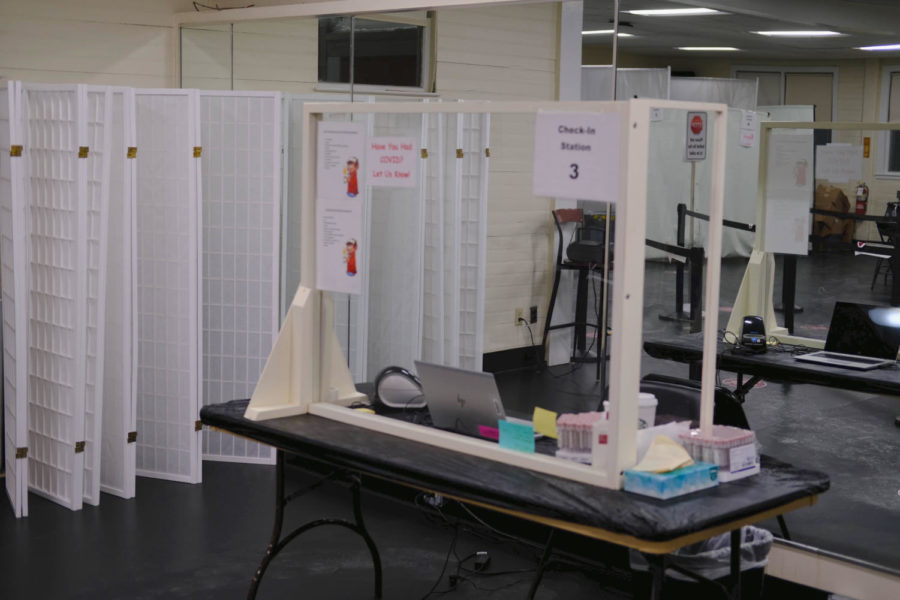The Science Behind COVID: Understanding Vaccines
A view of Dean College’s Covid center, which administers weekly rapid tests to students and staff.
February 9, 2022
An influx of Coronavirus strains, including Omicron and Delta, have forced the United States to be more vigilant about virus protocols than ever before. Masks are highly encouraged (if not mandatory) in most settings, as well as proof of vaccination status. Now, newly-minted booster shots are suggested to those seeking additional protection.
However, it can be easy to question the value of participating in such a vast array of measures without a basic comprehension of their respective roles. Some skeptics wonder how the goals of primary vaccines and secondary boosters differ, seeing as they are both injections. Others question the overall safety of the immunizations given the expedited manufacturing timeline. To better understand the importance of adhering to the CDC’s pandemic guidelines, one must first understand the science behind the vaccinations themselves.

Like most vaccines, the COVID shot triggers the body to make protective antibodies against the virus. The first dose starts that process, and two weeks later, the second injection challenges the immune system again. In slowly building this tolerance, scientists raise the level of antibodies that are present in the bloodstream. If one encounters COVID from that point, those antibodies ultimately stop the virus and prohibit critical sickness.
Dr. Dawn Poirier, Director of the Rooney Shaw Center for Innovations in Teaching at Dean College, explains the intent behind these shots. “The vaccines never promised that they would prevent us from getting the virus,” she explains. “What they promised was, if you do become infected, you won’t end up in the hospital.”
The booster shot is designed to improve these odds even further by increasing the amount of COVID-resistant antibodies in circulation. According to Dr. Poirier, the first two shots provide “about 35 percent of protection” from the virus’ full capacity. This is true for all manufacturers, including Pfizer, Moderna, and Johnson & Johnson. However, with the first two shots and a booster, that protection skyrockets to anywhere from 75 to 90 percent.

In fact, the manufacturers themselves make little difference as to how adequately the vaccines will perform. Cynthia Maride, a fellow Dean testing employee, attests that the Moderna and Pfizer vaccines are similarly structured, while the Johnson & Johnson product varies a bit in technique.
“The Moderna and Pfizer vaccines utilize mRNA to disable the COVID cell by recognizing a certain protein on its surface,” Maride explained. “The Johnson & Johnson uses a different mechanism, an antigen vector, which primes the immune system to … recognize the virus as a whole as opposed to that one specific piece.”
Blood clotting linked to the Johnson & Johnson vaccine in early April 2021 certainly startled many groups who had either received the dose themselves or were planning to do so. One can’t help but wonder if its antigen vector system was the clear-cut culprit.

“They might work in different ways, but they use the same idea,” Kayla Keogh, another Dean testing center employee added. “In my own opinion, the J&J vaccine isn’t any less effective than the other two.” According to all three Dean experts, much like flu shots, vaccines are apt to react differently within different biological systems. Any potential issues caused by the vaccines, whether J&J or not, were rarities that should not deter others from immunizing themselves.
Learning about vaccines and their role within the body holds enormous value in times of unfamiliarity. As the backbone behind COVID’s safety management, vaccinations should not be feared or shied away from. Rather, they need to be understood and trusted.















